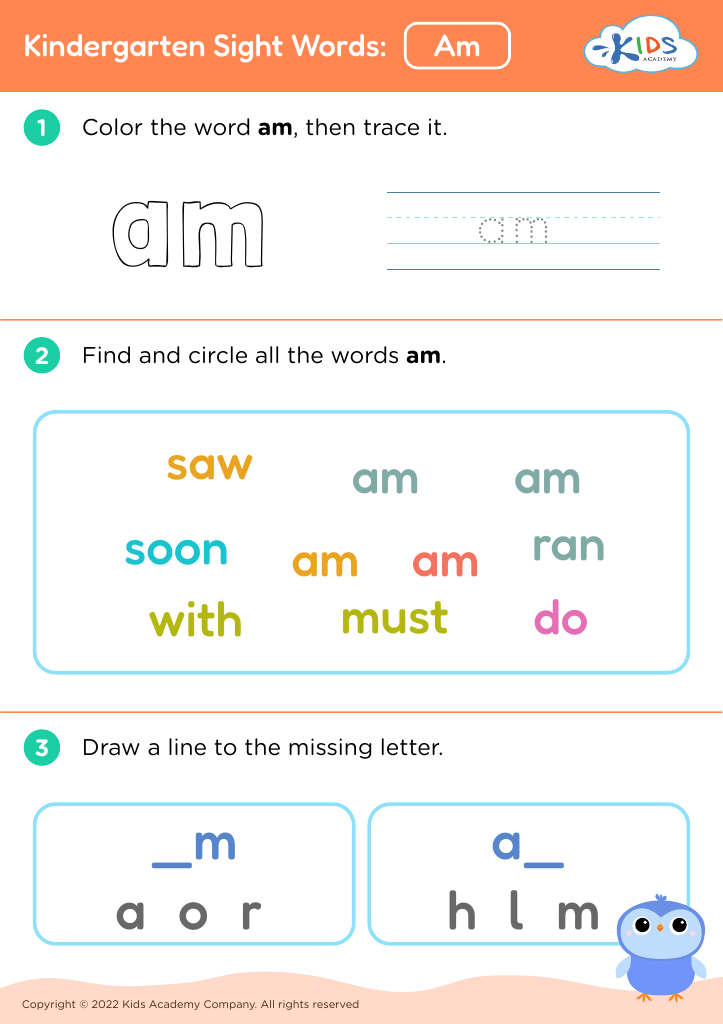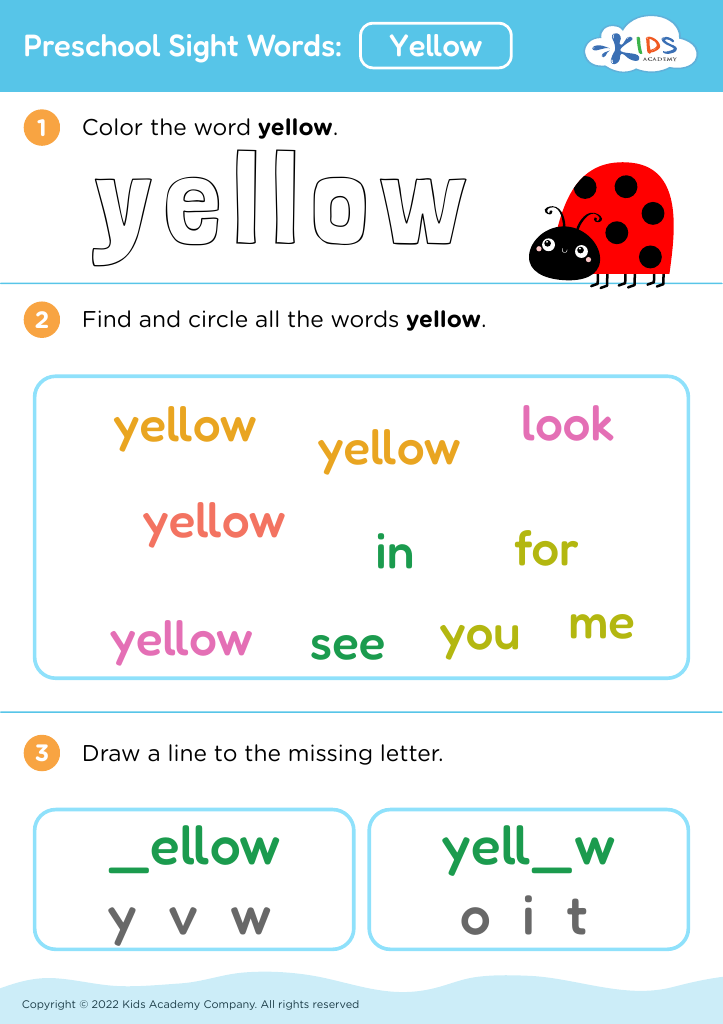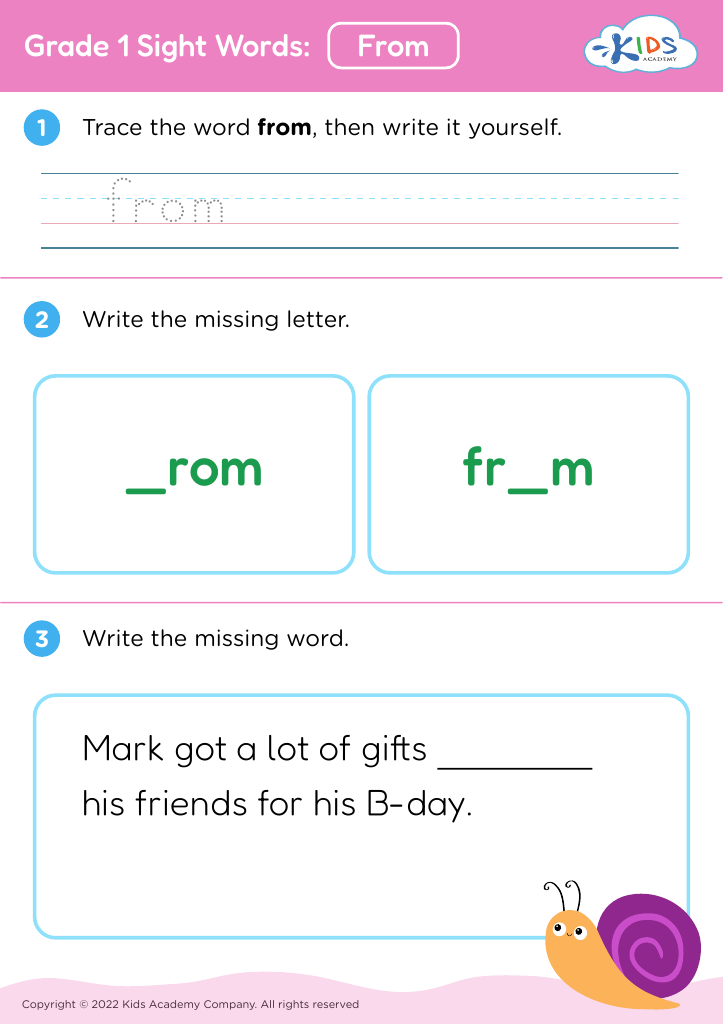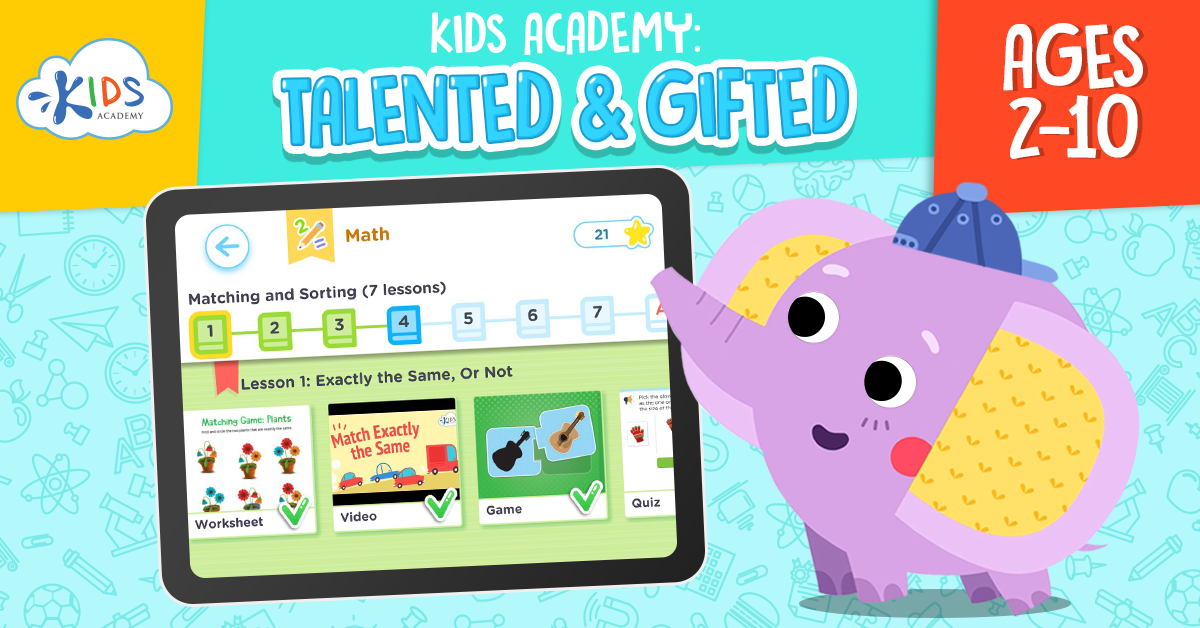Understanding bar graphs Sight Words Worksheets for Ages 4-7
3 filtered results
-
From - To
Discover our engaging "Understanding Bar Graphs Sight Words Worksheets" designed for children aged 4-7! These worksheets help young learners build essential reading and analytical skills while exploring fun bar graph concepts. Each activity encourages kids to identify sight words within the context of bar graphs, enhancing both literacy and comprehension. Our hands-on resources make learning enjoyable and interactive, fostering critical thinking as children answer questions related to the data presented. Perfect for homeschooling or classroom use, these worksheets provide a solid foundation in interpreting visual information, setting the stage for future math and reading success. Get started today and watch your child's confidence grow!
Understanding bar graphs and sight words is crucial for young children aged 4-7, as it lays the foundation for essential literacy and numeracy skills. For parents and teachers, fostering these skills can significantly enhance children's academic success and confidence.
Bar graphs serve as an introductory tool for children to visualize data, helping them interpret information and draw conclusions based on evidence. This skill is vital in various subjects and everyday life, as it promotes critical thinking and analytical abilities. Learning to understand bar graphs also fosters early math skills, encouraging children to count, compare quantities, and recognize patterns.
Similarly, sight words are an essential part of early reading development. Being able to recognize high-frequency words automatically allows children to read fluently, which improves comprehension and enjoyment of reading. This early exposure to reading boosts vocabulary, language comprehension, and overall literacy skills.
By prioritizing the understanding of bar graphs and sight words, parents and teachers provide children with a robust foundation for future learning. This dual focus encourages a well-rounded educational experience, equipping children with the tools they need to succeed academically and in everyday situations.



















